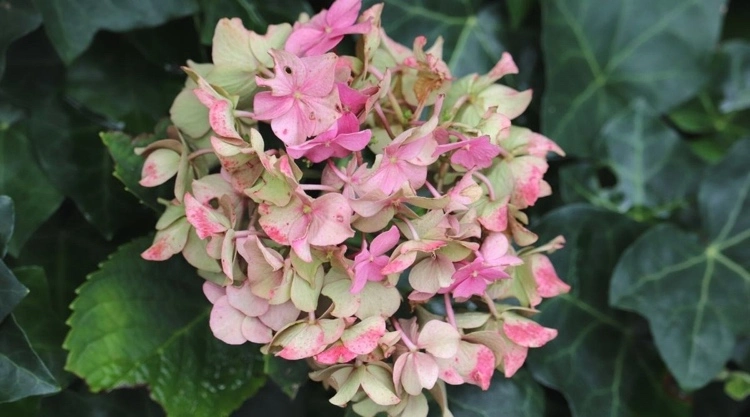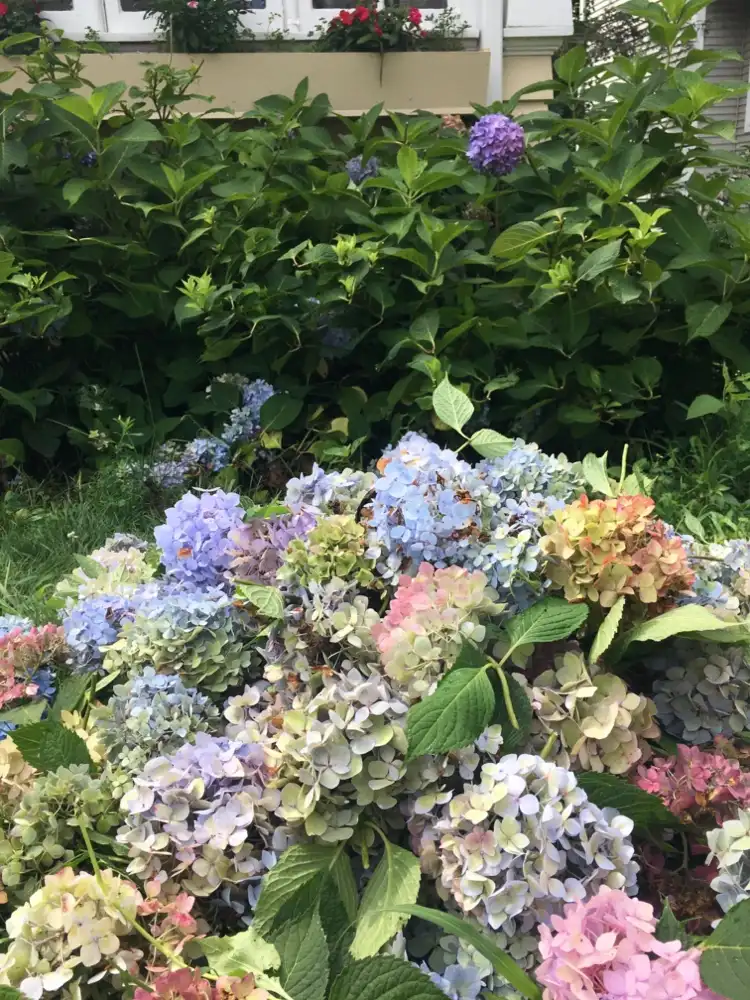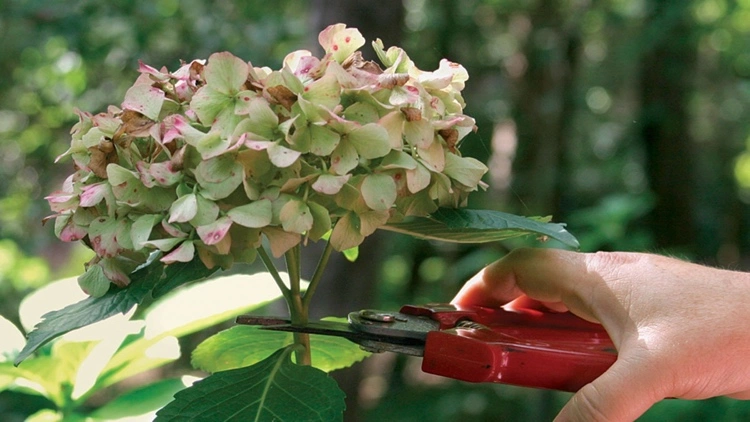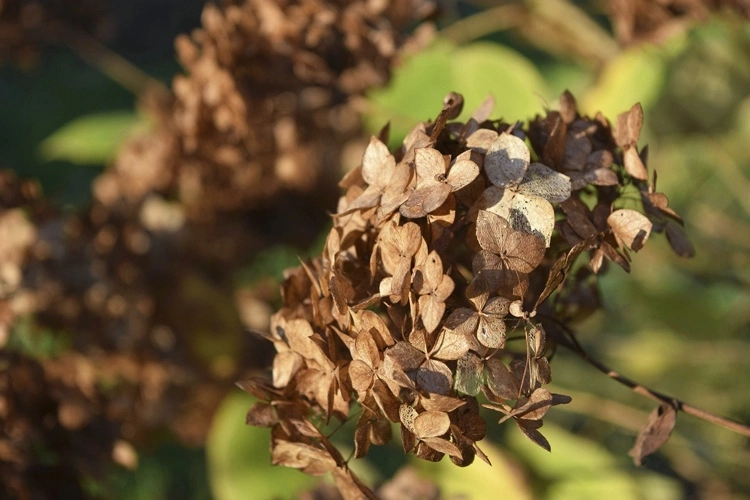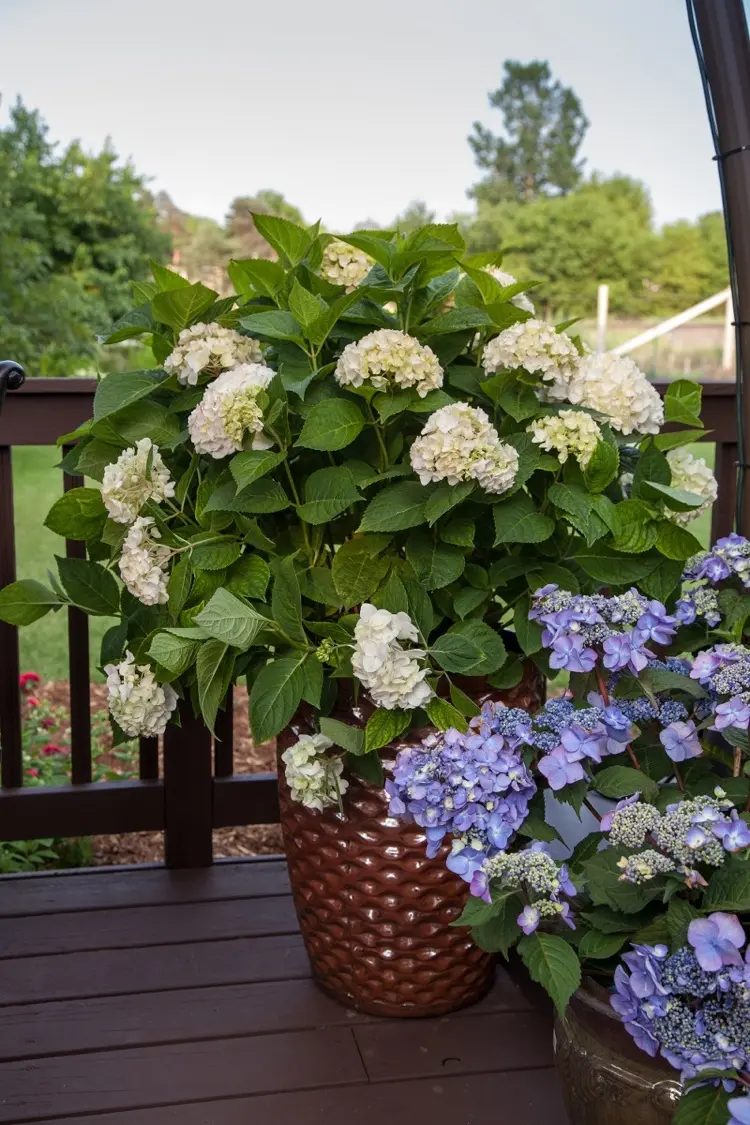Hydrangeas are one of the most popular garden shrubs and effortlessly beautify any garden with their flowers. But as soon as the flowers begin to fade, many gardeners ask themselves what to do with them: should you cut off faded hydrangeas or leave them? This depends on the timing.
In order to enjoy a long flowering period, faded hydrangea flowers can be trimmed during the growing season. This encourages the formation of new buds and the plant will bloom more profusely than ever before. However, this type of care is limited in time. In the following lines we shall explain when you should no longer cut off faded flowers and what role the cutting groups play in this.
Cut off Faded Hydrangeas: Useful or Not?
In the summer we all want a beautiful and well-kept garden. But as soon as the first blossoms of our favorite summer flowers fade, the beautiful landscape becomes somehow sad. Withered flowers are not the prettiest view. And now comes the question: can you remove the faded flowers to make the garden vital again? The short answer is yes. But it depends.
Spring is the best time to prune hydrangeas. Every hobby gardener should know that. At this point, the dried flower heads are removed, thus encouraging new growth.
But what about summer pruning? In summer, during the growing season, you should only cut off withered flowers. This will stimulate the healthy growth of the plant. This can make the flowering even more abundant, since the hydrangea does not invest its energy in seed formation, but in root and bud formation.
So during the flowering period from June to September, it makes perfect sense to remove the faded hydrangea flowers to keep the shrub growing healthy and strong. In the fall, the situation is different.
Also read: How to Save an Overheated Hydrangea? The Top Tips to Revive Your Plants and Bring Them Back to Life
Until When Can You Cut Hydrangeas in Summer?
Removing faded flowers from hydrangeas throughout the growing season regularly will keep the plant beautiful and clean and preserve its energy to produce new flowers. For hydrangeas of pruning group 1, it is very important to keep the final blooms intact. You can trim the shrubs throughout the flowering period if necessary, but stop doing so in August or at the latest by the beginning of fall. Leaving the buds in place will act as a frost protector for the new buds. Don’t cut off these last dried flower heads until spring, around February or March, when there is less risk of a hard frost. Buds can be successfully protected from late frost with some garden fleece.
Also read: Should You Cut Back Hollyhocks? When and How?
Remove Faded Flower Heads Properly
If you want to remove a few withered hydrangea flowers in summer, there are a few things you should pay attention to. Cutting not only at the wrong time, but in the wrong way can do more harm than good. How to do it right:
Start with sharp rose shears that are regularly disinfected to prevent disease spread. Grab the faded flower head and follow the stem to the next formed pair of leaves. You should see small buds in the crease between the leaf and the stem. Cut the stem about an inch above the new buds. Be careful when doing this. If the buds are accidentally removed, new flowers will not be able to develop.
Even better than cutting is breaking off the wilted flower heads. As a result, the plant regenerates faster. Simply snap the blossoms off to the side with your fingernail and break them. This stimulates flowering again in summer.
Also read: Things Hydrangeas Hate the Most: A Practical Guide to Abundant Blooms
Does The Pruning Group Still Play a Role?
If you haven’t planted a hydrangea for the first time, you probably know that hydrangeas can be divided into two pruning groups. Pruning Group 1 hydrangeas are:
- Bigleaf hydrangea (Hydrangea macrophylla)
- Mountain Hydrangea (Hydrangea serrata)
- Climbing Hydrangea (Hydrangea petiolaris)
- Sargent Hydrangea (Hydrangea sargentiana)
- Oakleaf Hydrangea (Hydrangea quercifolia)
For these species, it is crucial that you only cut off the withered flower heads only in spring and not after flowering. They serve as protection against frosty temperatures and should remain on the shrub over the winter. If some flowers have withered in summer, you can remove them, cutting off just below the flower head and above the first pair of leaves that have developed.
Pruning group 2 hydrangeas are only the snowball hydrangea and panicle hydrangea. These species bloom on this year’s wood and are more likely to have a second bloom in the fall. With these species, you can regularly remove wilted flowers in the summer to prolong the flowering period. This does not harm the plant, but even then it is advisable to leave the last flowers on the bush to protect the hydrangea from frost in winter.
Also read: Which Flowering Shrub to Plant in October? Top 5 Ideas for a Fall Landscape in Your Garden
Withered Hydrangeas in a Pot: What To Do?
Hydrangeas of pruning group 1, among other things, are cultivated in containers. The same rules apply as for garden hydrangeas. Cut off or clip off faded flower heads during the vegetation period, leave on from the end of August. Pruning is done in early spring.
Also read: When and How to Take Hydrangea Cuttings?

